
Bamberg is a town in Upper Franconia district in Bavaria, Germany, on the river Regnitz close to its confluence with the river Main. Bamberg had 79,000 inhabitants in 2022. The town dates back to the 9th century, when its name was derived from the nearby Babenberch castle. Cited as one of Germany's most beautiful towns, with medieval streets and buildings, the old town of Bamberg with around 2,400 timber houses has been a UNESCO World Heritage Site since 1993.

Gdańsk is a city on the Baltic coast of northern Poland, and the capital of the Pomeranian Voivodeship. With a population of 486,492, it is Poland's sixth-largest city and principal seaport. Gdańsk lies at the mouth of the Motława River and is situated at the southern edge of Gdańsk Bay, close to the city of Gdynia and the resort town of Sopot; these form a metropolitan area called the Tricity (Trójmiasto), with a population of approximately 1.5 million.

Münster is an independent city in North Rhine-Westphalia, Germany. It is in the northern part of the state and is considered to be the cultural centre of the Westphalia region. It is also a state district capital. Münster was the location of the Anabaptist rebellion during the Protestant Reformation and the site of the signing of the Treaty of Westphalia ending the Thirty Years' War in 1648. Today, it is known as the bicycle capital of Germany.
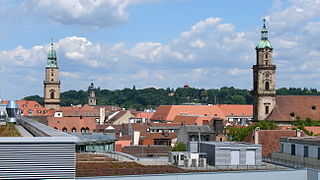
Erlangen is a Middle Franconian city in Bavaria, Germany. It is the seat of the administrative district Erlangen-Höchstadt, and with 119,810 inhabitants, it is the smallest of the eight major cities in Bavaria. The number of inhabitants exceeded the threshold of 100,000 in 1974, making Erlangen a major city according to the statistical definition officially used in Germany.

Memmingen is a town in Swabia, Bavaria, Germany. It is the economic, educational and administrative centre of the Danube-Iller region. To the west the town is flanked by the Iller, the river that marks the Baden-Württemberg border. To the north, east and south the town is surrounded by the district of Unterallgäu.

Visselhövede is a town in the district of Rotenburg in Lower Saxony, Germany. Nearby towns include the district capital Rotenburg, Walsrode and Verden. Larger cities within a 100 km radius are Bremen, Hanover and Hamburg. On 30 April 2024 Visselhövede had 10.116 inhabitants.

Torgau is a town on the banks of the Elbe in northwestern Saxony, Germany. It is the capital of the district Nordsachsen.

Wittenberge is a town of eighteen thousand people on the middle Elbe in the district of Prignitz, Brandenburg, Germany.
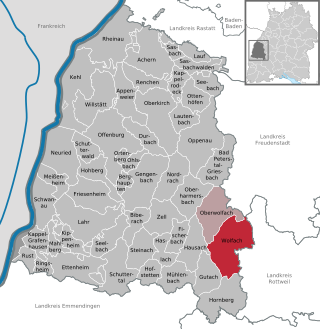
Wolfach is a town in the Black Forest and part of the Ortenaukreis in Baden-Württemberg (Germany) and borders the Freudenstadt and Rottweil districts.
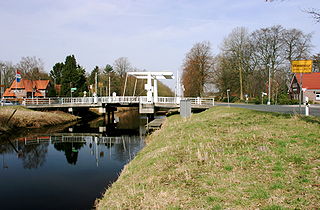
Wiesmoor is a town in the district of Aurich in the northwest of Lower Saxony. It lies on the Nordgeorgsfehnkanal and is the youngest town in the East Frisia area having been bestowed town rights on 16 March 2006, two days later on 18 March 2006, Wiesmoor celebrated the Centenary of the settlement's founding. The town owes its growth to the industrialisation of the harvesting of peat from the surrounding moors. Wiesmoor holds an annual flower festival and the town is also known as the ‘Flower City’, the name originates from the large numbers of flowers which are grown in the town’s industrial greenhouse. Formerly the greenhouses were heated by waste heat from the now defunct peat burning power station which was located in the city. Wiesmoor also has the official title of a Luftkurort; tourism now plays an important role in the local economy.

Wyk auf Föhr is the only town on Föhr, the second largest of the North Frisian Islands on the German coast of the North Sea. Like the entire island it belongs to the district of Nordfriesland. Wyk includes the two minor town districts of Boldixum and Südstrand.
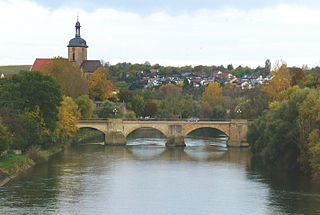
Lauffen am Neckar or simply Lauffen is a town in the district of Heilbronn, Baden-Württemberg, Germany. It is on the river Neckar, 9 kilometres southwest of Heilbronn. The town is famous as the birthplace of the poet Friedrich Hölderlin and for its quality wines – in particular the "Lauffener Katzenbeißer Schwarzriesling".
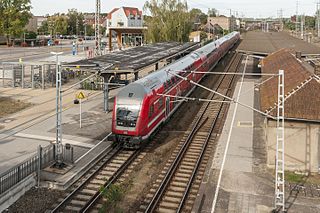
Falkenberg (Elster) station is one of the biggest stations in the German state of Brandenburg. It is located in the town of Falkenberg/Elster in the south of the state. It is classified by Deutsche Bahn as a category 3 station. Railways run in seven directions from the station. It is a two-level interchange station, built where several routes interconnect. There is a large marshalling yard connecting to both the upper and the lower parts of the station. At times Falkenberg was the fifth largest marshalling yard in East Germany (GDR). Only part of these tracks have been in use since the 1990s.

Marcardsmoor is a village and district (Stadtteil) of the East Frisian town of Wiesmoor, in Lower Saxony. It is located north of the town, on the intersection of the Ems-Jade Canal and the Nordgeorgsfehn Canal.
Auricher Wiesmoor II is a district (Stadtteil) of the East Frisian town of Wiesmoor, in Lower Saxony. A linear settlement, it is located southwest of the town and runs along the Voßbarg Canal.

Hinrichsfehn is a district (Stadtteil) of the East Frisian town of Wiesmoor, in Lower Saxony. It is located south of the town and west of the Nordgeorgsfehn Canal.
Mullberg is a district (Stadtteil) of the East Frisian town of Wiesmoor, in Lower Saxony. A linear settlement, it is located southeast of the town and east of the Nordgeorgsfehn Canal.

Wilhelmsfehn I is a district (Stadtteil) of the East Frisian town of Wiesmoor, in Lower Saxony. A linear settlement, it is located northwest of the town, to the north of Wilhelmsfehn II.
Wilhelmsfehn II is a district (Stadtteil) of the East Frisian town of Wiesmoor, in Lower Saxony. A linear settlement, it is located west of the town, to the south of Wilhelmsfehn I.
Zwischenbergen is a village and district (Stadtteil) of the East Frisian town of Wiesmoor, in Lower Saxony. It is located approximately six kilometers southwest of the town center.


















